8 Milkweeds Native to Virginia
BY ANNIE PARNELL | MAY 25TH, 2023 | LAWN CARE, VIRGINIAVirginia boasts several native species of milkweed, a humble herbaceous wildflower that attracts pollinators and acts as a vital food source for native pollinators and beloved endangered species, like bees and monarch butterflies. It’s a great idea to plant milkweed for any garden in the Old Dominion – but how can you choose which milkweed to plant in your yard?
Some milkweed varieties may not be available at your local garden center, while others just aren’t suited to Virginia’s tricky transition zone climate. Check out these eight milkweed species native to Virginia to make the perfect choice for your lawn.
In this article:
- 8 Milkweeds Native to Virginia
- How to Choose Milkweeds for Your Virginia Landscape
- FAQ About Milkweeds in Virginia
- Where to Find Milkweeds in Virginia
8 Milkweeds Native to Virginia
1. Common Milkweed (Asclepias syriaca)
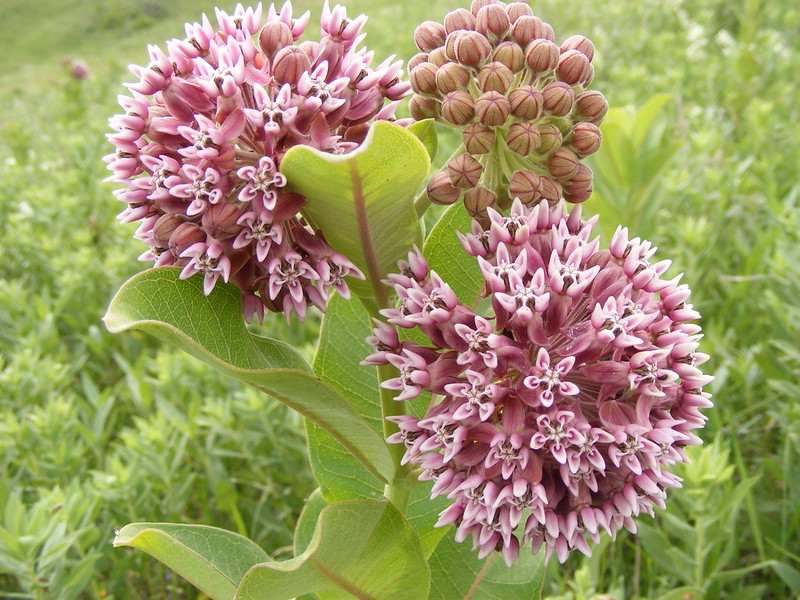
Photo Credit: USFWS Mountain-Prairie / Flickr / CC BY 2.0
Common milkweed is a classic choice for the garden with native regions across North America, including the eastern and central United States and southern Canada. This versatility makes it a great option for Virginia’s hot summers and cold winters. It’s the favorite host plant of the monarch butterfly, and produces pinkish-white flowers with an attractive vanilla scent.
Common milkweed spreads rapidly through rhizomes, so make sure you’re ready for it to make itself at home in your garden. It can grow to about 5 feet tall, and in addition to monarchs it’ll attract bumblebees and other insects to its nectar-laden flowers.
Growth habit: Herb
USDA hardiness zone: 3 to 9
Mature size: 3 to 5 ft
Duration: Perennial
Bloom time: Jun-Aug
Sunlight needs: Full sun
Soil preferences: Rocky, clay, well-drained loamy, and sandy soils
Water needs: Medium
Potential hazards: Toxic to humans and animals
2. Swamp Milkweed (Asclepias incarnata)
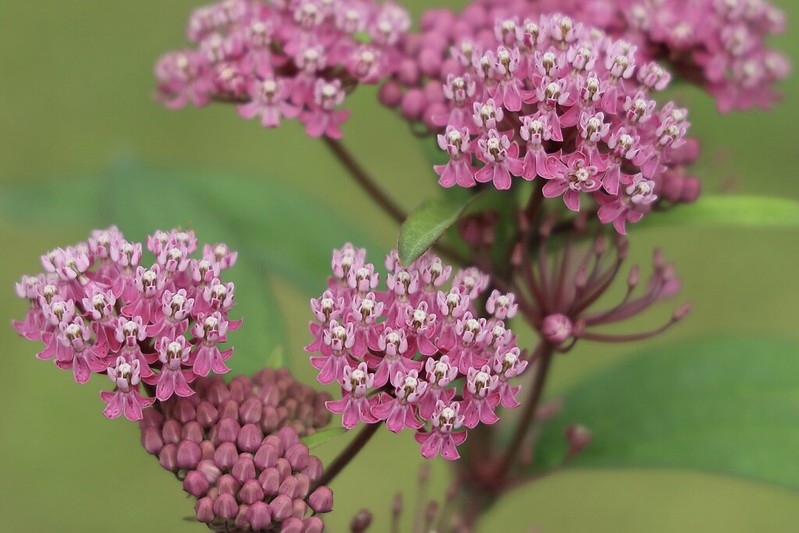
Photo Credit: Lydia Fravel / Flickr / CC BY 2.0
Swamp milkweed is a common milkweed native to Virginia, where it thrives in wet soils such as the Washington, D.C. area and the Great Dismal Swamp. It’s moderately tolerant of salt spray, and produces clusters of dusty pink flowers that bloom from late summer to mid-fall, providing visual interest and an important source of food and shelter. Unlike other milkweeds, it can tolerate partially shady conditions.
Swamp milkweed is another preferred choice for monarch butterflies, and it may also attract aphids. It thrives when planted near riverbanks, ponds, and streams in the home landscape. Swamp milkweed is a great option for a rain garden, or a wet yard with the red clay soil common in Virginia’s Piedmont region.
Growth habit: Herb
USDA hardiness zone: 2 to 6
Mature size: approx. 5 ft tall
Duration: Perennial
Bloom time: Jun-Oct
Sunlight needs: Full sun to partial shade
Soil preferences: Rich, wet, mucky clay soils
Water needs: High
Potential hazards: Toxic to humans and animals
3. Butterfly Weed (Asclepias tuberosa)
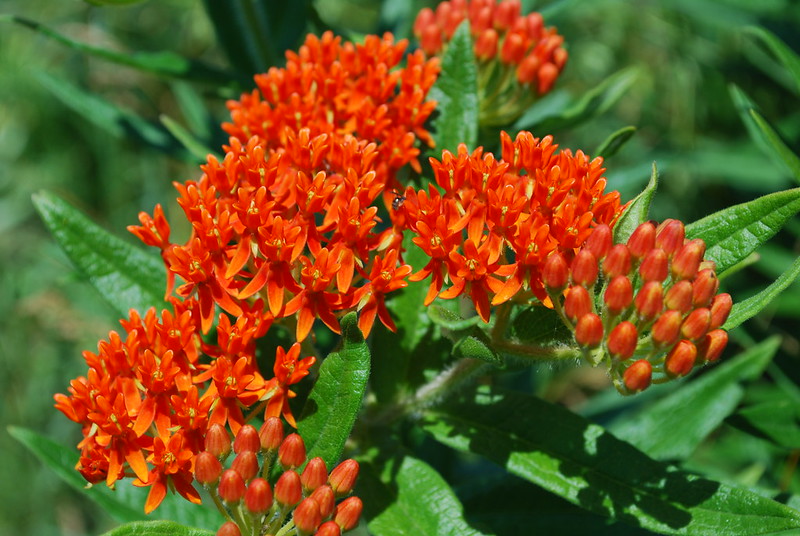
Photo Credit: Joshua Mayer / Flickr / CC BY-SA 2.0
True to its name, butterfly weed is a major attraction for many different butterfly species, including monarchs, gray hairstreaks, and queen butterflies. The bright orange blooms of this compact milkweed make a lovely addition to Virginia lawns, and it’s commonly grown from seed for home use. Unlike other milkweeds, butterfly weed doesn’t produce the trademark milky sap.
Butterfly weed is also known as pleurisy root for its historic medicinal uses, though be cautious, as it’s toxic if ingested in large quantities. Native from New England to Florida and westward to Arizona, it’s an exceedingly drought-tolerant milkweed choice, and will also attract hummingbirds, though you may face problems with aphids.
Growth habit: Herb
USDA hardiness zone: 3 to 9
Mature size: 1 to 2 ft
Duration: Perennial
Bloom time: May-September
Sunlight needs: Full sun
Soil preferences: Dry to moist, well-drained sandy soils
Water needs: Low
Potential hazards: Toxic if ingested in large quantities
4. Poke Milkweed (Asclepias exaltata)
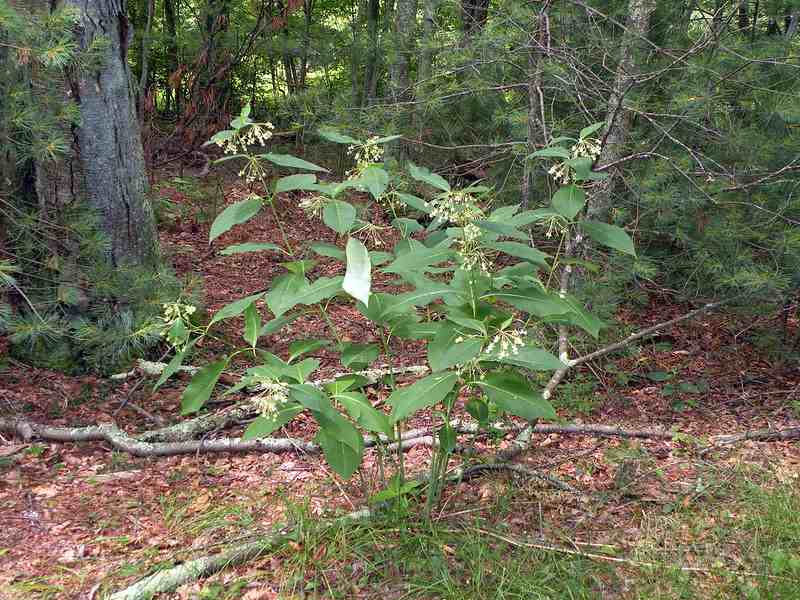
Photo Credit: Doug McGrady / Flickr / CC BY 2.0
Poke milkweed, also known as tall milkweed, is a widely-distributed milkweed native to Virginia. Poke milkweed is naturally found on the edges of forests, where it thrives in rich organic soils. It’s been known to hybridize with common milkweed when the two are in proximity, as these plants closely resemble each other.
Poke milkweed can grow up to six feet in height, and like swamp milkweed it will also tolerate shade and damp conditions, though it doesn’t require its soil to be waterlogged. When in bloom, poke milkweed has a striking cinnamon-vanilla fragrance.
Growth habit: Herb
USDA hardiness zone: 3 to 7
Mature size: 2 to 6 ft
Duration: Perennial
Bloom time: May-August
Sunlight needs: Full sun to partial shade
Soil preferences: Rich organic content and moderate moisture
Water needs: Medium
Potential hazards: Toxic in large quantities
5. Whorled Milkweed (Asclepias verticillata)
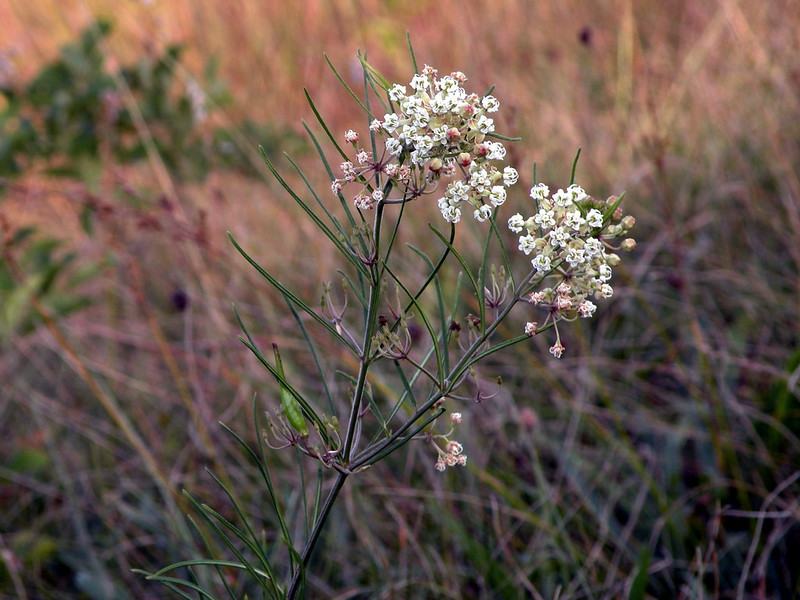
Photo Credit: Doug McGrady / Flickr / CC BY 2.0
Whorled milkweed is slightly rarer than other types of Virginia milkweed, but it still makes for a great native milkweed garden addition. Its name comes from the “whorled” or spiraling nature of its leaves, and it’s also known as horsetail milkweed for its distinctive flower stalks. Whorled milkweed is naturally found in woodland habitats, and it can tolerate drought, partial shade, and rocky or clay soils.
Whorled milkweed is one of the more toxic milkweed varieties to humans and animals, and it should not be ingested if grown in the garden. It creates greenish-white flowers and is of particular value to monarch butterflies and honey bee species.
Growth habit: Herb
USDA hardiness zone: 3 to 9
Mature size: 1 to 3 ft tall
Duration: Perennial
Bloom time: May-September
Sunlight needs: Full sun to partial shade
Soil preferences: Sandy, rocky, clay
Water needs: Low
Potential hazards: Toxic if ingested
6. Green Comet Milkweed (Asclepias viridiflora)
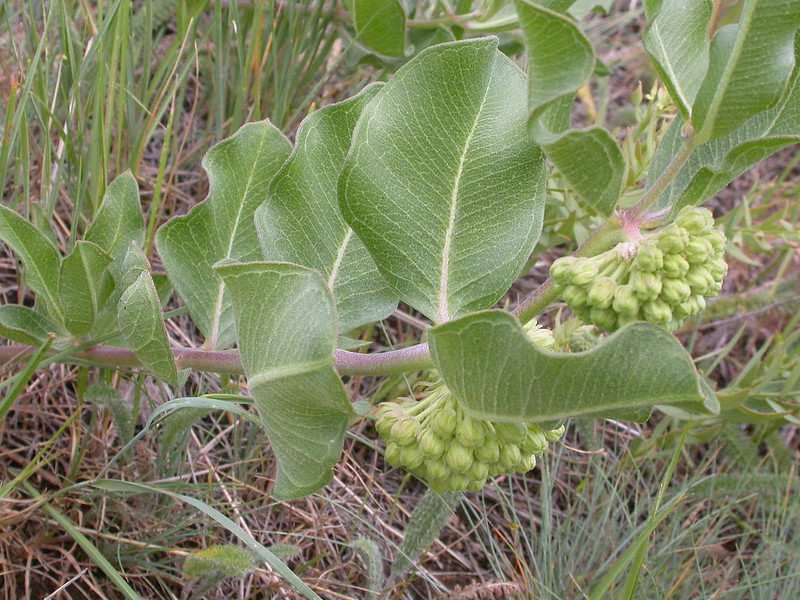
Photo Credit: Matt Lavin / Flickr / CC BY-SA 2.0
With its thick vertical stem and yellow-green and pink blooms, green comet milkweed provides a unique appearance and a pollinator habitat in the garden. It’s particularly valuable to native bee species, as well as monarch butterflies, whose caterpillars feed on the leaves.
This drought-tolerant milkweed is very adaptable to different soil and light conditions, and will produce longer, thinner leaves in dry weather and rounder ones in moist climates.
Growth habit: Herb
USDA hardiness zone: 3 to 9
Mature size: Up to 2ft tall
Duration: Perennial
Bloom time: June-September
Sunlight needs: Full sun to partial shade
Soil preferences: Sandy, loamy, rocky
Water needs: Low
Potential hazards: Toxic if ingested
7. White Milkweed (Asclepias variegata)
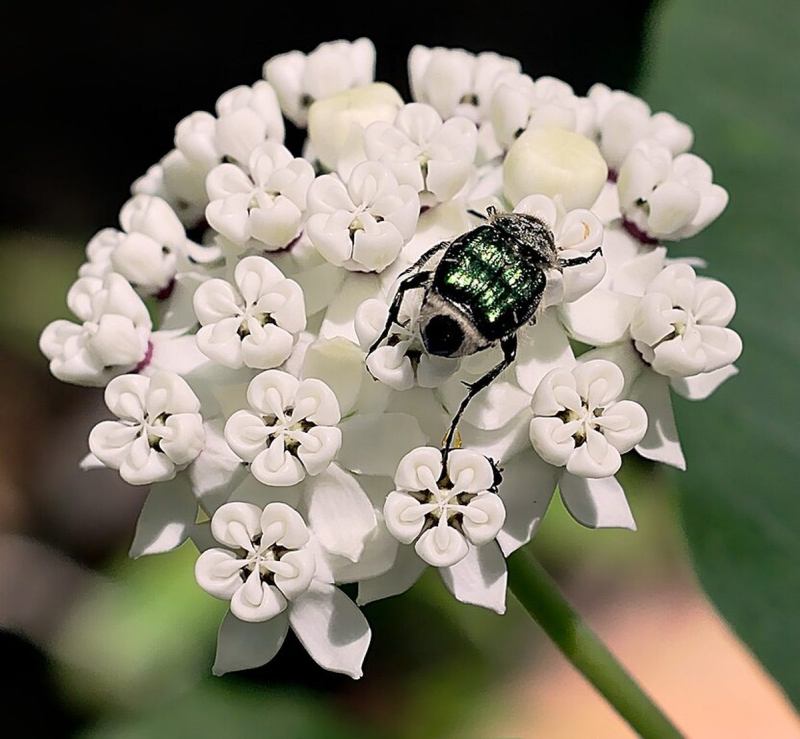
Photo Credit: James Leon Young / Wikimedia Commons / CC BY-SA 4.0
White milkweed is a rarer find in Virginia, but it’s still a native plant that makes a great addition to any butterfly garden or pollinator garden. Also known as redwing milkweed or redring milkweed, this is another native to woodland habitats, and it’s highly resistant to damage from grazing deer.
White milkweed produces white, popcorn-like flowers with purple centers. It looks particularly breathtaking when planted in clumps or masses, which will show off its appearance and maximize pollinator benefit.
Growth habit: Herb
USDA hardiness zone: 3 to 9
Mature size: 1 to 4 ft
Duration: Perennial
Bloom time: May-July
Sunlight needs: Full sun to partial shade
Soil preferences: Dry, sandy to rocky
Water needs: Low
Potential hazards: Toxic if ingested
8. Purple Milkweed (Asclepias purpurascens)
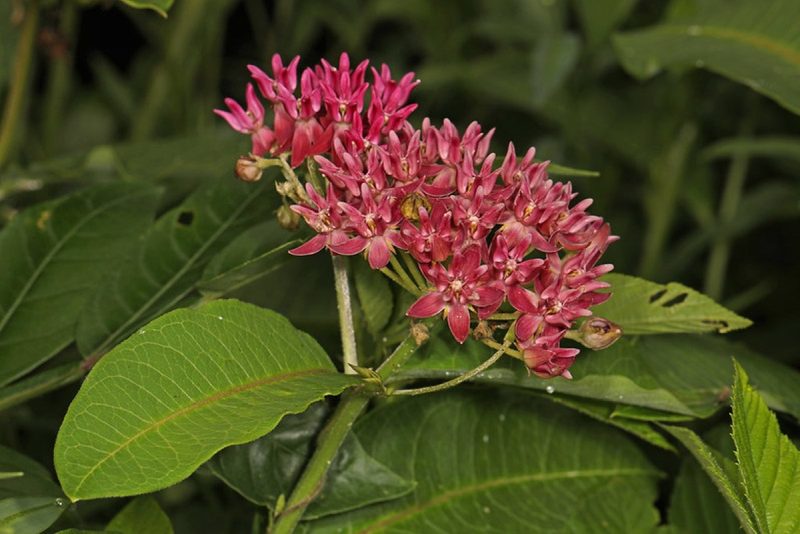
Photo Credit: Judy Gallagher / Flickr / CC BY 2.0
Purple milkweed has very distinctive pinkish-purple flowers, which are excellent at attracting long-tongued bees, butterflies, and hummingbirds. It’s naturally found in several different habitats, including shrub thickets, shorelines, and woodlands, making it an adaptable and attractive garden addition.
Purple milkweed prefers a higher nutrient content than some other milkweed types in its soil. While it’s widely distributed across the US, its population is in decline in some areas, so planting is a good opportunity to aid in conservation efforts!
Growth habit: Herb
USDA hardiness zone: 3 to 8
Mature size: 2 to 3 ft tall
Duration: Perennial
Bloom time: May-July
Sunlight needs: Full sun
Soil preferences: Sandy soils, high nutrient content
Water needs: Low
Potential hazards: Toxic if ingested
How to Choose Milkweeds for Your Virginia Landscape
With all the options available for native Virginia milkweeds, it can seem difficult to select the perfect fit for your lawn. To make sure you’re making the right choice, consider the climate around your Virginia home. Are you looking for a salt-tolerant milkweed that will bask in the beachy conditions of the Tidewater, or one that thrives in the loamy soils of the Blue Ridge Mountains?
These factors can help you pick the perfect milkweed plants for you:
- Sunlight. Some milkweeds can thrive in partial shade, while others need full sun to bloom.
- Soil quality. Many milkweed types are hardy plants that thrive in poor and rocky soils, but some require more nutrients to thrive. Consider getting a soil test before you shop.
- Children and pets. Most milkweed types are poisonous to humans and animals in some capacity, but some are highly toxic if ingested. Keep this in mind when selecting milkweed to plant if you have young children or pets!
FAQ About Milkweeds in Virginia
When should I plant milkweed in Virginia?
Plant milkweed seeds in your garden in the fall in Virginia, as they have adapted to overwinter and thrive in cool temperatures.
Can I just scatter milkweed seeds in my lawn?
Yes! Milkweed is hardy enough to take root if it’s simply scattered around your yard – that’s how it spreads naturally. But, if you have a specific planting scheme in mind or want better odds of germination, prep your soil first and press each seed into the ground by walking over them or using your hands – no need to bury them.
Will milkweed take over my yard?
Common milkweed behaves aggressively in the lawn and can take over a planting scheme. For a less boisterous alternative, try butterfly weed, swamp milkweed, or purple milkweed.
What other plants are native to Virginia?
Virginia’s native plants include:
- Black-Eyed Susan
- Cutleaf Coneflower
- Whorled Tickseed
- Eared Coreopsis
- Eastern Redbud
- Flowering Dogwood
- Blue False Indigo
- Cardinal Flower
- Fall Phlox
Where to Find Milkweed in Virginia
Because milkweed is so beneficial to pollinators, there are plenty of ways to find it. Native plant nurseries are likely to sell milkweed varieties, so check out this list of native plant nurseries in Virginia compiled by the Virginia Native Plants Society for options near you.
Prefer to buy your plants online? The Virginia page on the blog Grow Milkweed Plants has online purchase options specifically for Virginia natives.
The great thing about native plants is they’re typically low-maintenance. You can further minimize your outdoor chores by hiring a lawn care pro near you to handle the yard’s mowing, trimming, and edging. Connect with trusted pros in Richmond, Alexandria, Falls Church, and many other cities across the state.
Main Photo Credit: USFWSmidwest / Wikimedia Commons / Public domain